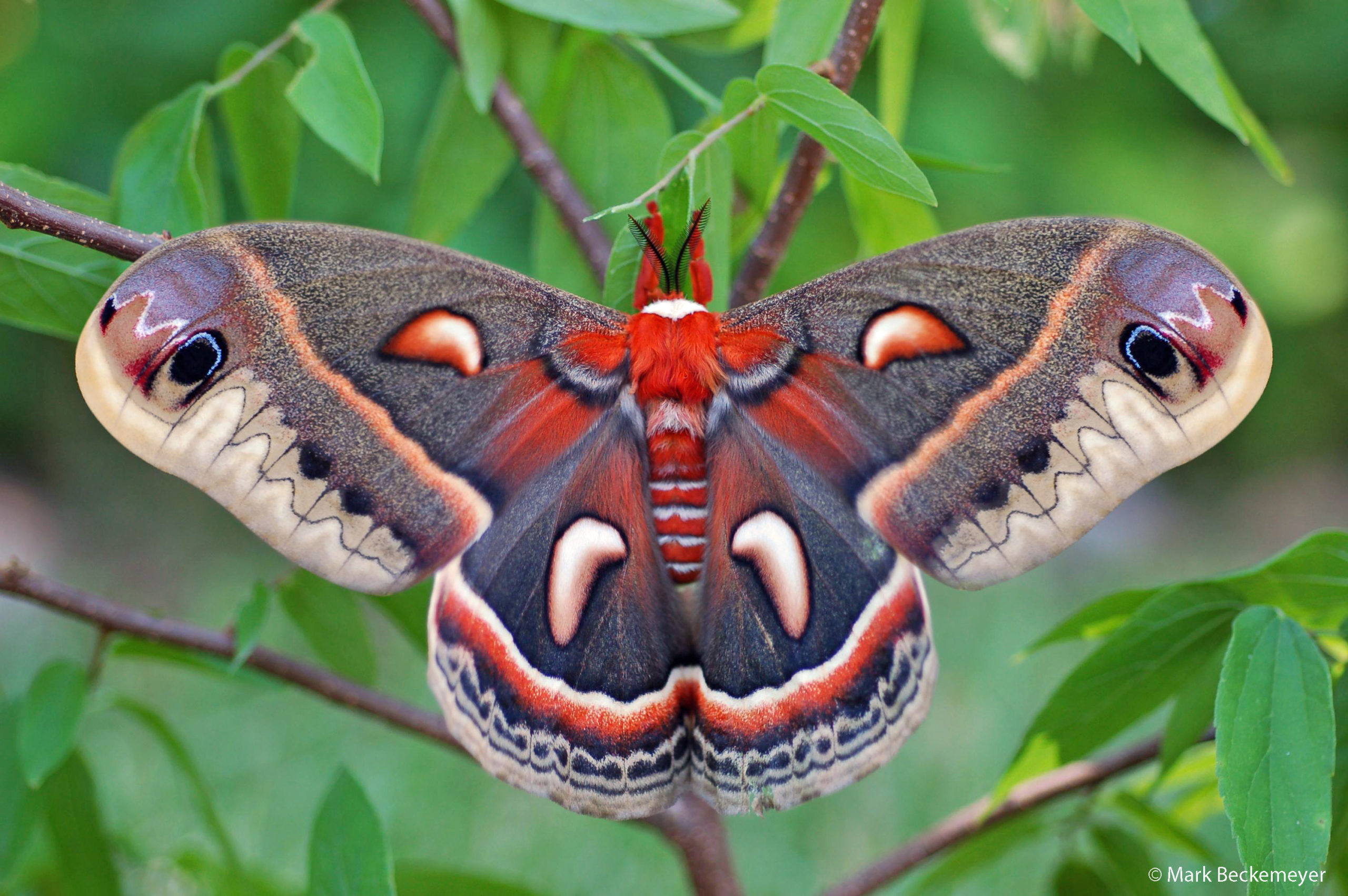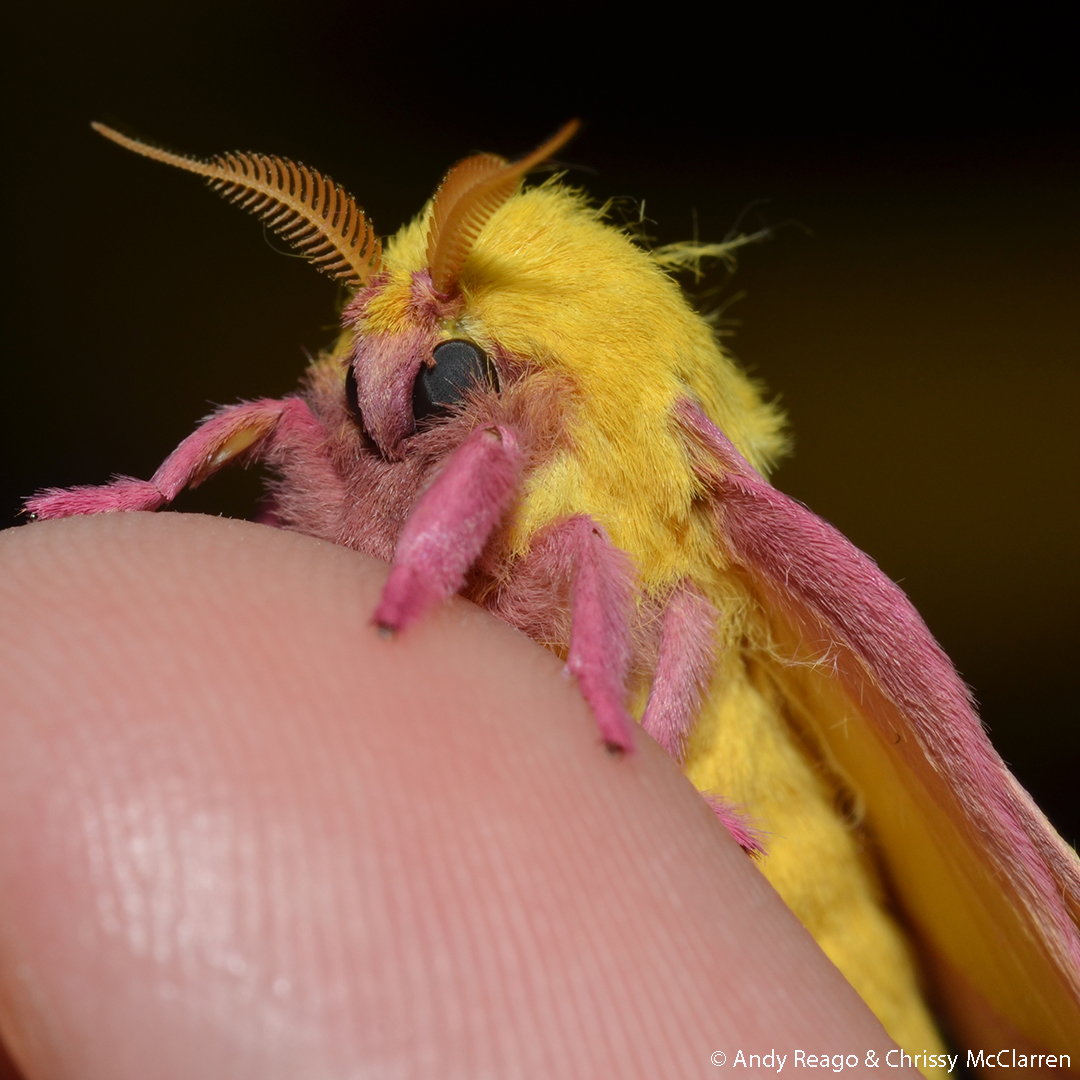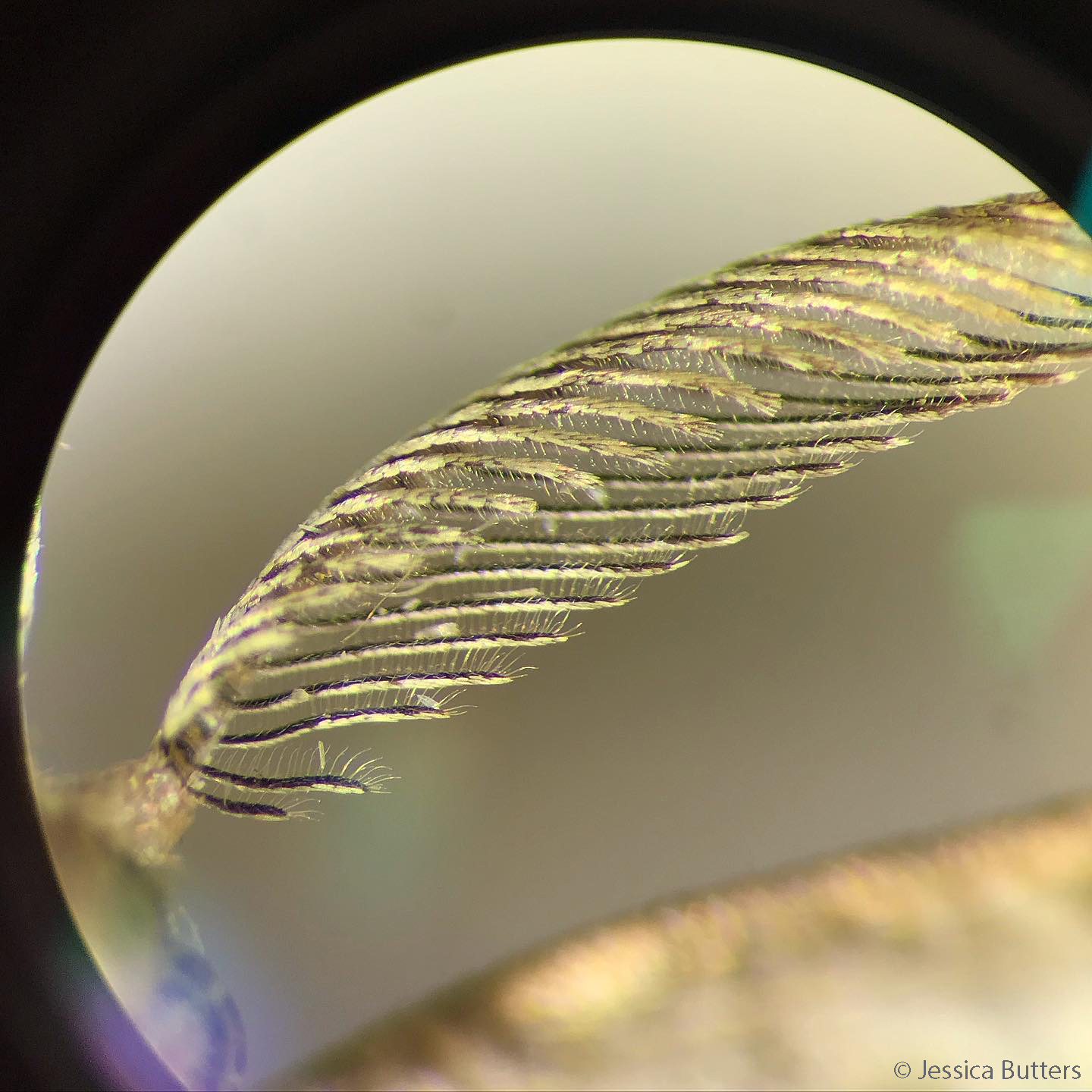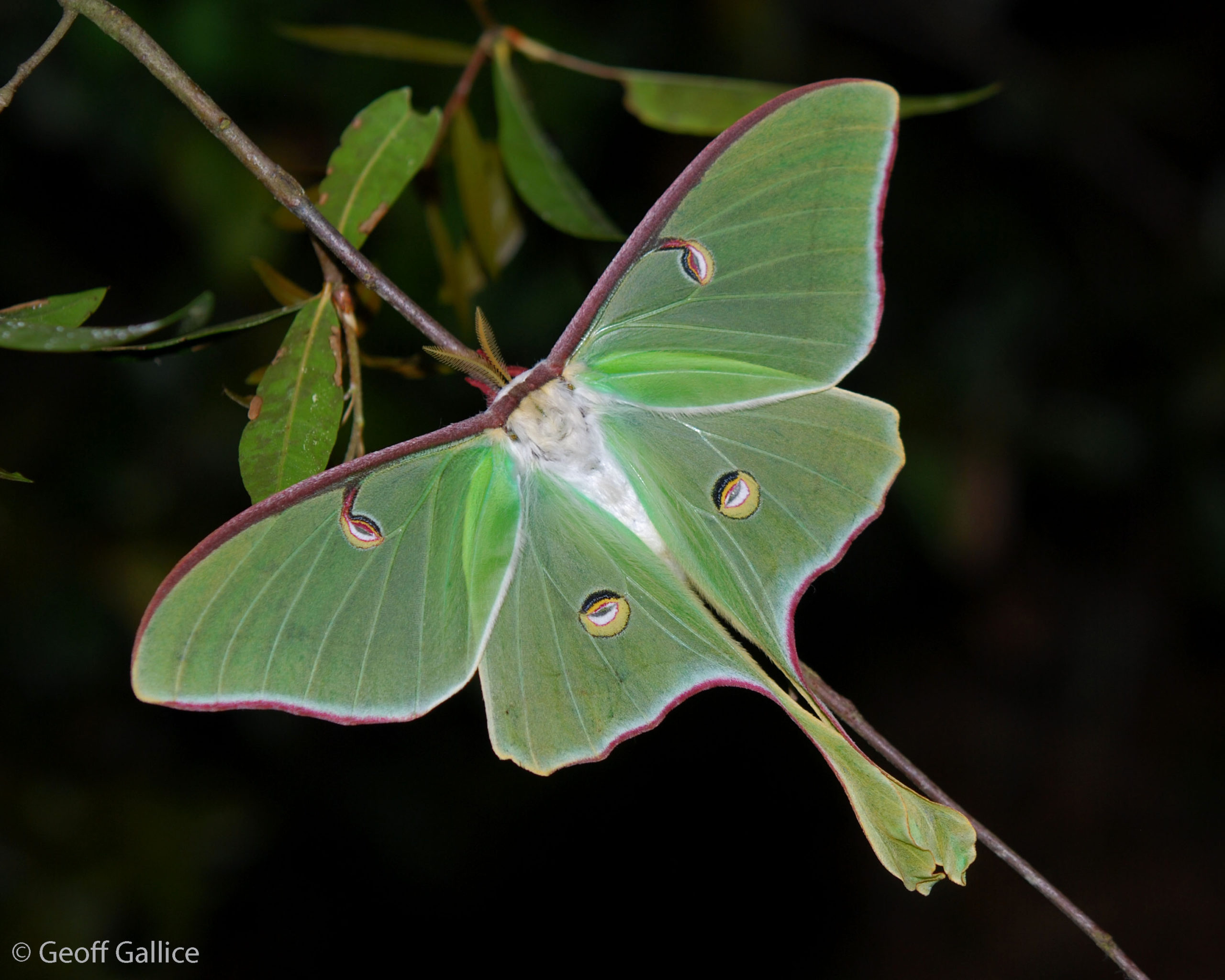Forget about buying roses – in the great words of Shania Twain, “that don’t impress me much”. To impress me, you’d have to match the energy of male moths. Instead of dropping cash on last-minute flowers, male moths are willing to fly miles for a first date, dodge dangerous predators, and out-compete other males, all while most humans are fast asleep.
But how exactly do moths find each other? Many are nocturnal, some aren’t brightly colored, and they can be tiny*. Plus, female moths generally stay put and let the males come to them. So what is the male moth’s secret to finding love in the black abyss of a night sky? The key is their incredible sense of “smell” through their unique antennae!
If you’re looking at a moth, the antennae may tell you if it’s a male or a female. Female moths often have the two simple strands of antennae that we are used to seeing on many insects. It’s the male antennae that are interesting; some, though not all, have antennae that look like a pair of feathers, each one having many branches covered in fine hairs. These feather-like antennae quite literally comb the night air in search of the calls of female moths, which are sent in the form of pheromones**. Male moths from larger moth families (e.g. giant silk moths) can detect a single molecule of female pheromone from seven miles away! Imagine if you could find a compatible stranger based on smell alone, or attract one using a drop of perfume. Though odd, it seems simpler than using dating apps; but is it truly easier?
Distance isn’t the only threat to a male moth striving to be lucky in love. Once his antennae detect a female call of his species, he has to find her – fast. Other males may have picked up the female’s call as well, and many female moths only mate with the first male she encounters. There is no prize for second place. To hone in on her location, males often fly in the cross-winds to try to detect more pheromone. Once a call is detected, he flies in that direction until the pheromone fades yet again.
During this high-stakes game of Marco Polo, moths also have to dodge hungry predators, such as bats. Different moths have different strategies for this. They may taste bad so they are spit out instead of eaten, have evasive flight maneuvers that would impress any Top Gun fan, or have incredibly fuzzy bodies that absorb sound. This weakens a bat’s attempt to use echolocation, giving the moths a cloak of invisibility.
While the journey to mate may be arduous for males, female moths have their own complex decisions to make. Female moths only release small amounts of pheromones in hopes of attracting male moths with very sensitive antennae, which indicates they are fit and healthy. Additionally, she only mates with the first male to find her to ensure he is a strong and fast flier, another indicator of good health. Female moths don’t have genetic material to waste on mediocre males – they put high amounts of energy into creating their eggs. However, if the mating period goes on and the female hasn’t attracted a mate, she will start releasing higher amounts of pheromone. This intensifies her call, making her easier to find. Besides intensifying her call, the female can also tailor when and how often she calls. These strategies help ensure that she receives the best male possible and that her energies were not spent in vain.
The world of moths remains a mystery to most people. Considering the intricacies and drama involved, it deserves to be a topic of regular discussion! If you are at a loss of what to talk about at your next Valentine’s Day date or gathering, consider bringing up moth mating. It’s sure to add interest to an otherwise trite Tuesday.
*Some moths are diurnal (active during the day), many are brightly colored, and some species are huge!
**Pheromones are chemicals released by animals that change the behavior of other animals of the same species.




